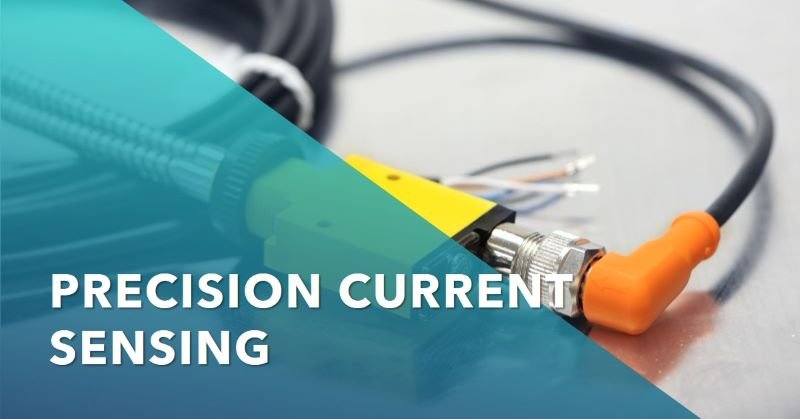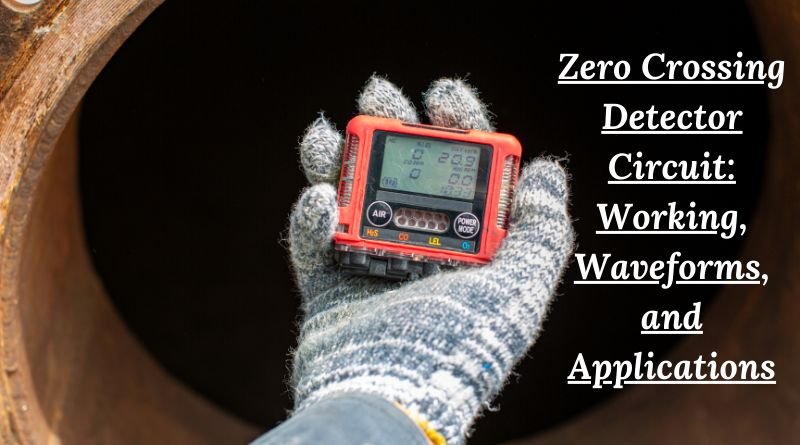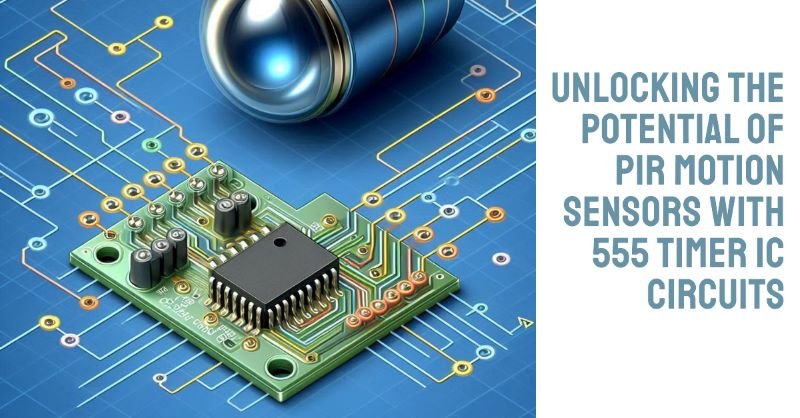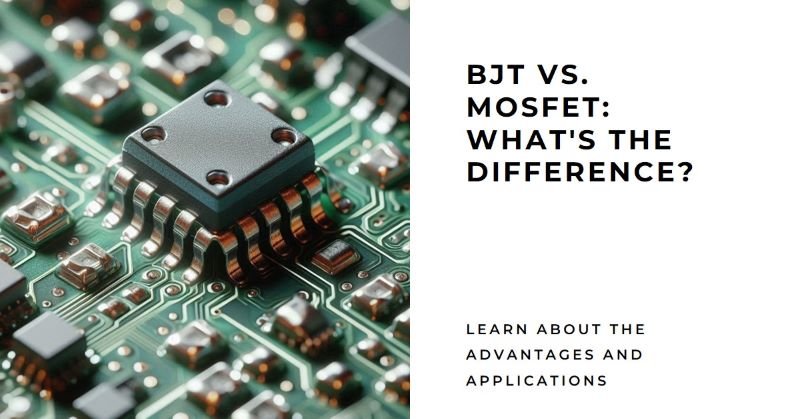Current Sense Amps: Capture Small Voltage Drop With Precision
A current sense amplifier is a specialized type of operational amplifier (op-amp) that is used to measure and amplify small current signals. It is commonly used in a variety of applications such as power management, motor control, battery monitoring and current sensing in electronic circuits.
What is a Current Sense Amplifier?
A current sense amplifier typically consists of a differential input stage, a gain stage and an output stage. The differential input stage is responsible for converting the small current signals into voltage signals, which can then be amplified by the gain stage. The amplified voltage signals are then processed by the output stage to provide an output voltage that is proportional to the input current.
Current sense amplifier has ability to measure small currents with high accuracy and low offset. It is designed to have a high common-mode rejection ratio (CMRR) to minimize the effects of common-mode noise and interference. This ensures that the amplifier only amplifies the differential current signals and rejects any common-mode signals.
The main purpose of a current sense amplifier is to accurately measure the current flowing through a circuit or a load. By amplifying the small current signals, it allows for precise monitoring and control of the current levels, which is crucial for ensuring the proper functioning and protection of electronic devices and systems.
Key Features of Current Sense Amplifiers
Here are some key features of current sense amplifiers:
- High Accuracy: Current sense amplifiers are designed to provide accurate measurements of current, with low offset and high linearity. This ensures that the measured current values are reliable and precise.
- Low Power Consumption: Many current sense amplifiers are designed to operate with low power consumption, making them suitable for battery-powered applications and energy-efficient systems.
- Wide Input Range: Current sense amplifiers are often designed to accommodate a wide range of input currents, allowing for flexibility in various applications.
- Overcurrent Protection: Some current sense amplifiers come with built-in overcurrent protection features, which help to prevent damage to the amplifier and the circuit in case of excessive current levels.
- Adjustable Gain: Many current sense amplifiers offer adjustable gain settings, allowing for fine-tuning of the amplification factor to match the specific requirements of the application.
- Temperature Compensation: To ensure accurate measurements over a wide temperature range, some current sense amplifiers incorporate temperature compensation techniques to minimize the effects of temperature variations on the measurement accuracy.
- Small Form Factor: Current sense amplifiers are often available in small packages, making them suitable for space-constrained applications and compact electronic devices.
- Wide Supply Voltage Range: Current sense amplifiers can operate with a wide range of supply voltages, providing compatibility with different power supply configurations.
Working of a Current Sense Amplifier

A current sense amplifier operates based on Ohm’s Law, which states that the voltage in a circuit is directly proportional to the current flowing through it. By directing the current through a shunt resistor Rs, a voltage drop (Vsense) is generated. Typically, this sensed voltage is relatively low, allowing for controlled power dissipation and energy conservation.
Subsequently, the voltage drop is magnified using an internal instrumentation amplifier, resulting in the desired output voltage Vout. To further refine the signal, Vout can be processed using an Analog-to-Digital Converter (ADC). This additional step enhances the accuracy and usability of the amplified signal.
Types of Current Sense Amplifiers
Let’s explore some of the common types of current sense amplifiers:
High-Side Current Sense Amplifiers
As the name suggests, these amplifiers are placed on the high side of the load or power source. They are specifically designed to measure the current flowing through the load by sensing the voltage drop across a shunt resistor placed in series with the load. High-side current sense amplifiers offer several advantages. Firstly, they allow for accurate current sensing in high-side applications where the load is connected to the positive supply voltage. This is particularly useful in systems where the load is not ground-referenced.
Additionally, high-side current sense amplifiers provide galvanic isolation between the load and the sensing circuitry, which can be beneficial in applications where isolation is required for safety or noise reduction purposes.
Low-Side Current Sense Amplifiers
These amplifiers are placed on the low side of the load or power source. Similar to high-side current sense amplifiers, they also measure the current by sensing the voltage drop across a shunt resistor. However, in this case, the shunt resistor is placed in series with the ground path of the load.
Low-side current sense amplifiers have their own set of advantages. They are commonly used in applications where the load is ground-referenced or connected to the negative supply voltage. They are also generally more cost-effective compared to high-side current sense amplifiers, as they do not require additional circuitry for galvanic isolation.
Bidirectional Current Sense Amplifiers
Bidirectional current sense amplifiers are a versatile type of current sense amplifier that can measure current flow in both directions. They are commonly used in applications where the current can flow in either direction, such as bidirectional power supplies or motor control systems.
These amplifiers typically use a differential amplifier configuration to measure the voltage drop across a shunt resistor. By using this configuration, they can accurately measure both positive and negative currents. Bidirectional current sense amplifiers are often used in applications where precise current monitoring and control are required, such as battery charging systems or power management circuits.
Selecting the Right Shunt Resistor
Choosing the right shunt resistor is crucial for accurate current measurement. The shunt resistor determines the voltage drop across it, which is then amplified by the current sense amplifier. Here are a few factors to consider when selecting a shunt resistor:
- Resistance value: The shunt resistor should have an appropriate resistance value to ensure that the voltage drop across it is within the desired range.
- Power rating: The shunt resistor should be able to handle the power dissipation associated with the current being measured.
- Temperature coefficient: The temperature coefficient of the shunt resistor affects the accuracy of the current measurement. It is important to choose a resistor with a low temperature coefficient to minimize errors.
- Tolerance: The tolerance of the shunt resistor determines the accuracy of the current measurement. A lower tolerance resistor provides a more accurate measurement.
It is also important to consider the physical size and cost of the shunt resistor, as these factors can impact the overall design and budget of the system.
Here’s a table comparing shunt resistor values and their corresponding voltage drops at different current levels:
| Shunt Resistor Value | Max Current (A) | Voltage Drop (mv) @ Max Current | Power Dissipation (mW) @ Max Current |
|---|---|---|---|
| 10mΩ | 10 | 100 | 1000 |
| 50mΩ | 5 | 250 | 1250 |
| 100mΩ | 3 | 300 | 900 |
| 500mΩ | 1 | 500 | 500 |
Amplifier Design Considerations
When designing a current sense amplifier circuit, it is important to consider several factors to ensure optimal performance. These considerations include:
- Gain: Choose an appropriate gain for the amplifier to amplify the voltage drop across the shunt resistor. The gain should be high enough to provide good resolution but not so high that it saturates the amplifier output. This will ensure that the voltage drop can be easily measured or processed.
- Input Offset Voltage: Minimize the input offset voltage of the amplifier as it directly contributes to measurement errors. Techniques such as auto-zeroing or chopper stabilization can be used to reduce the offset voltage and improve accuracy.
- Common-Mode Rejection: Ensure that the amplifier has a high common-mode rejection ratio (CMRR) to effectively reject common-mode noise and interference. This is particularly important in high-side current sensing applications where noise can be a significant issue.
- Bandwidth: Select an amplifier with sufficient bandwidth to capture rapid changes in current levels. The bandwidth should be at least 10 times the highest frequency component of the current signal to ensure accurate and reliable measurements.
- Output Swing: Ensure that the amplifier’s output swing is compatible with the input range of the subsequent stage, such as an analog-to-digital converter (ADC) or a comparator. This will prevent any clipping or distortion of the amplified signal and maintain the integrity of the measurement.
Here’s a simple current sense amplifier circuit using an op-amp:
+Vs
|
|
+-+
| | R1
| |
+---++-++----+
| | |
| -+ |
Vin | +|- | Vout
| + |
| +-+ |
| | |
+--------+---+
|
|
GND
This circuit employs an operational amplifier (op-amp) set up as a non-inverting amplifier with a gain determined by (1 + R1/Rin), where Rin represents the value of the shunt resistor. The output voltage (Vout) correlates directly with the input current (Iin) and is mathematically expressed as:
Vout = Iin × Rin × (1 + R1/Rin)
This equation essentially states that the output voltage is the product of the input current, the shunt resistor value, and the gain factor (1 + R1/Rin).

Applications of Current Sense Amplifier
Here are some common applications where current sense amplifiers are used:
1. Power Management
In power management applications, current sense amplifiers play a crucial role in monitoring and controlling power consumption. They are used in voltage regulators, battery chargers, and power supplies to measure the current flowing through different components. By accurately sensing the current, these amplifiers enable efficient power management and protection against overcurrent conditions.
2. Motor Control
Current sense amplifiers are widely employed in motor control systems to monitor the current flowing through the motor windings. By providing real-time feedback about the motor’s current, these amplifiers enable precise control of motor speed, torque, and direction. This is particularly important in applications such as robotics, industrial automation, and electric vehicles.
3. Automotive Electronics
In the automotive industry, current sense amplifiers are used in various electronic systems. They help in monitoring the current consumption of components like fuel injectors, ignition coils, and electric power steering systems. By accurately measuring the current, these amplifiers assist in optimizing the performance and efficiency of automotive systems.
4. Battery Management
Current sense amplifiers are essential in battery management systems to monitor the charging and discharging currents of batteries. They enable accurate measurement of current during charging and discharging cycles, helping to prevent overcharging or overdischarging, which can damage the battery. This is crucial in applications like portable devices, electric vehicles, and renewable energy systems.
5. Industrial Control Systems
Current sense amplifiers find extensive use in industrial control systems, where precise current monitoring is required for safety and efficiency. They are used in applications such as motor drives, process control, and power monitoring. By providing accurate current measurements, these amplifiers enable better control and protection of industrial equipment.
Final Words
Current sense amplifiers are essential components in electronic systems that require precise current measurement and control. Their ability to accurately measure current levels enables efficient operation, protection against faults and optimized performance of various electronic components. With their high accuracy, low power consumption and integrated features, current sense amplifiers continue to play a vital role in the advancement of electronic systems.








